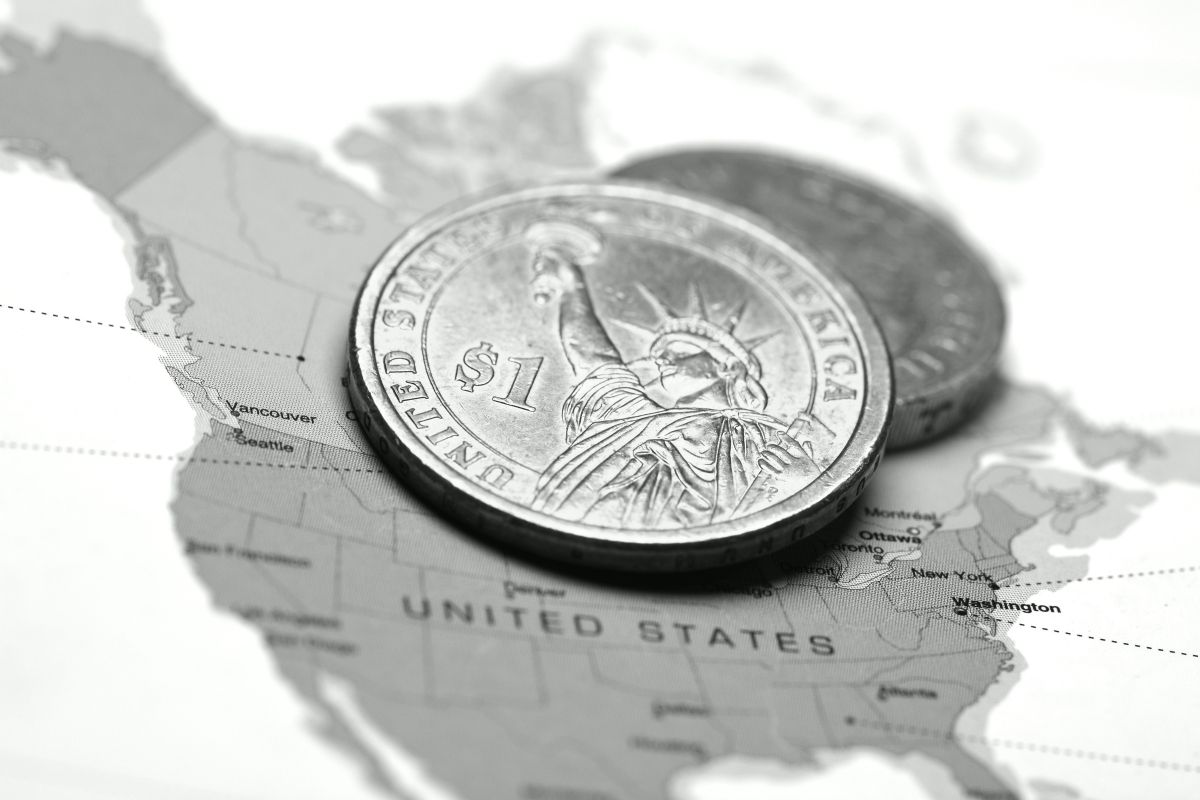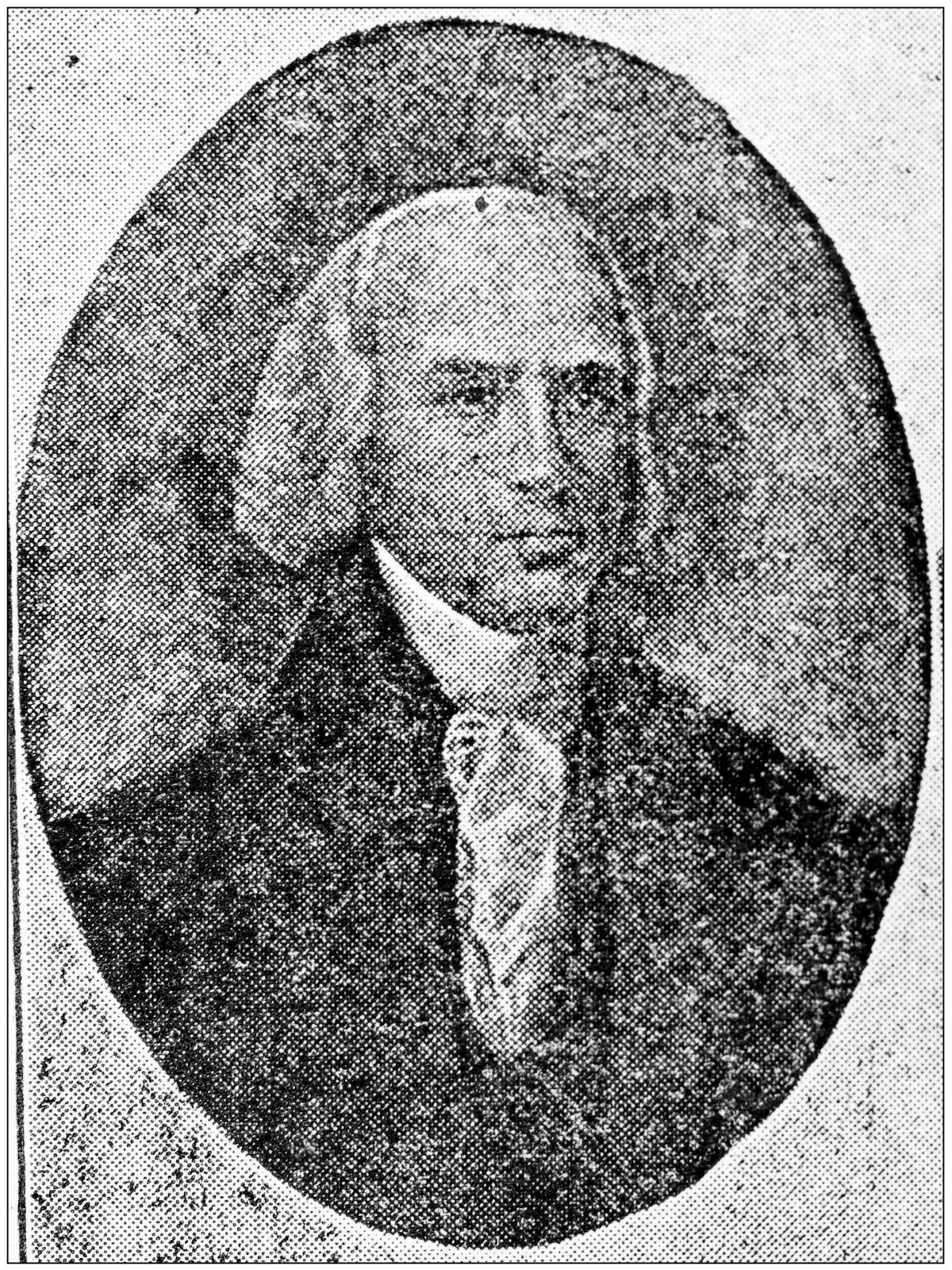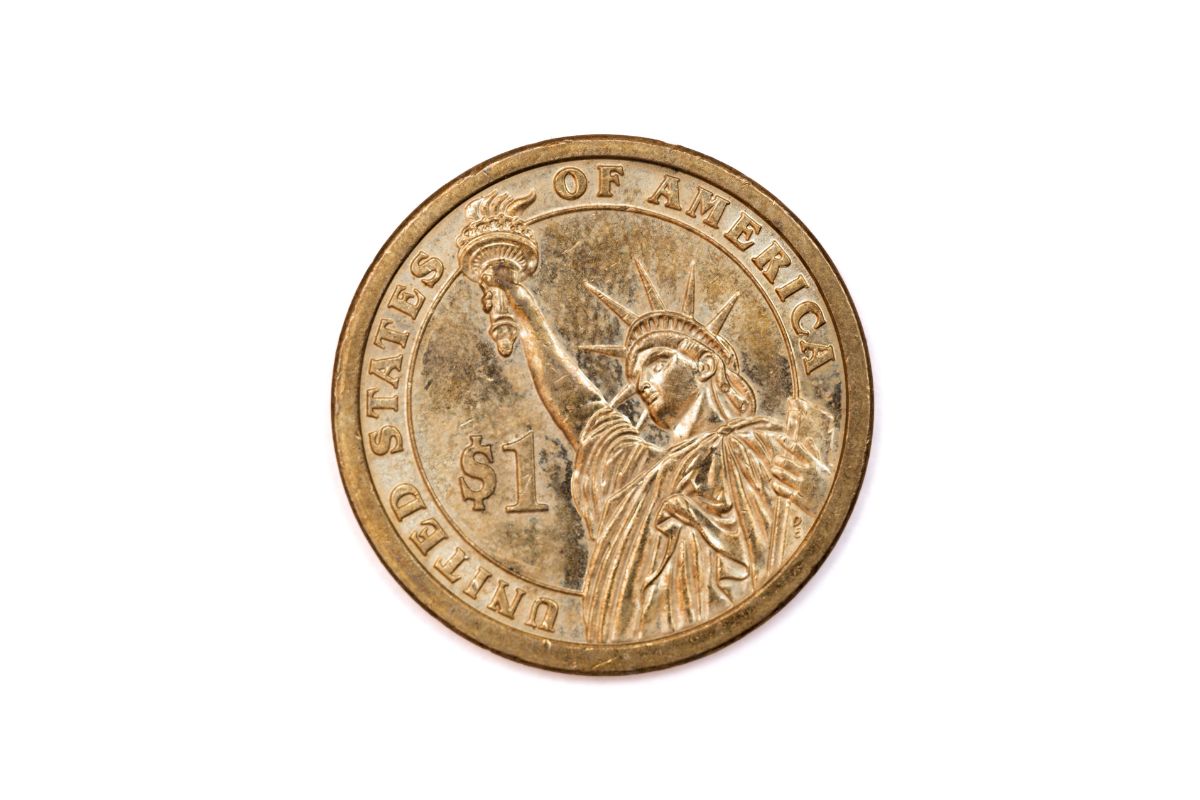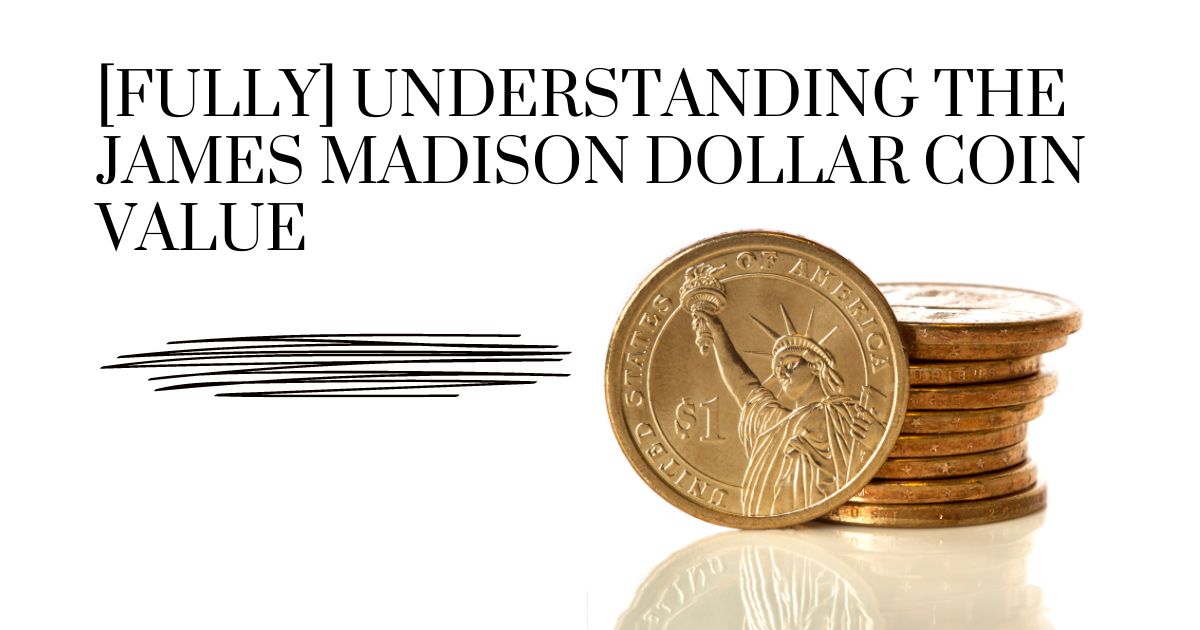The James Madison Dollar Coin
The James Madison dollar coin value is between $0.75 and $0.85. The James Madison Presidential Collection is one of the United States Mint’s most daring and stunning coins ever produced.
The typical phrases “E Pluribus Unum,” the year of issuance “2010,” and the mint mark are now on the coin’s edge, making it unique among circulating coins. It also allows for a large and striking photograph of the fifteenth president.
How Much is a James Madison Dollar Coin Worth?
How much is a James Madison dollar coin worth? In circulation conditions, the James Madison dollar coin is worth between $0.75 and $0.85. It is worth between $0.90 to $11.00 in uncirculated conditions. The value of these coins can fluctuate over time due to various variables. This coin weighs 0.28 ounces (8.1 grams) in total. Read our article and find out What is the Millard Fillmore Dollar Coin Value Today?
Because the striking of the currency was only in a specific amount, it is slightly valuable; nevertheless, because the minting of the coin was in 2007, there are still many coins available, which affects the value of such coins. Typically, They are worth more than their face value, but not hundreds of dollars as one might expect from rare coins.

Who Was James Madison?
James Madison, the famous fourth President of the United States, is also on the 5,000 dollar bill. He was in office from 1809 to 1817. He was a crucial figure in the development and ratification of the United States Constitution. James was also Secretary of State and War.
Madison is one of the United States’ founding fathers. He was a full supporter of the Democratic-Republican Party and was instrumental in establishing the first national bank.

Cities the James Madison Coin Was Minted
Denver, San Francisco, and Philadelphia struck the James Madison coin. Denver produced most of these coins, followed by Philadelphia. The production in Denver is approximately 87,780,000 US president coins and 84,560,000 coins in Philadelphia. If you find this coin in your change, it is more likely to be from the Denver mint than the Philadelphia mint.
James Madison Presidential Coin Errors
There are a few U.S. mint President coin faults discovered. The flaws in the James Madison presidential coin increase its worth. So, let’s check out some of the mistakes on this presidential coin.
Upside Down Lettering
This problem happens when the coin’s lettering is upside down. You can locate this on the coin’s edge.
Missing Edge Writing
This issue occurs when the coin’s edge lettering is missing.
Double Edge Lettering
This problem occurs when the coin’s edge lettering appears twice.
Lettered Blank Planchet
This is a mistake in which the coin seems blank but has lettering. You can see it on the coin’s front or reverse.
The James Madison Coin Grading
The James Madison dollar coin value has the following grading system:
- This coin has significant wear and is only worth its face value.
- In circulated form, this coin shows considerable wear and is worth between $0.75 and $0.85.
- In uncirculated condition, this coin has no wear and is worth between $0.90 and $11.00.
Artist Information and Characteristics
A portrait of James Madison appears on the front of the James Madison dollar coin. On the reverse, you find an image of the Statue of Liberty. Joel Iskowitz created the coin, and Don Everhart sculpted it (a well-known United States Mint Sculptor and Engraver).
The front of the coin bears the inscriptions of James Madison and the 4th President and his presidential tenure from 1908 to 1817. On the back is a $1 print alongside the words the United States of America.

The History of the James Madison Coin
James Madison Jr., born on March 16, 1751, to James Madison Sr. and Nelly Conway, had epilepsy. At 5 feet (60 inches) and 100 pounds (45.4 kilograms), he was typically a “small,” “quiet,” and “shy” individual. Nonetheless, this “little” guy graduated from Princeton University with degrees in Greek, Latin, Hebrew, Political Philosophy, and Law.
This ‘silent’ man transformed American history as a political theorist and statesman. He became the fourth President of the United States and served not one but two terms. James Madison was a mystery.
Mr. Madison speaks for himself through his extensive record of philanthropic achievements, with a focus on coins and stamps featuring him.
The connection between American colonies and the British strained because of increasing British taxes. During this time, James Madison was an appointee to the Orange County militia as a colonel. He left the military for a political career due to his precarious health.
He represented Orange County at the Virginia Constitutional Convention in 1776 when he crafted the state’s religious freedom provision. James was the youngest member of the Continental Congress after serving on the Governor’s Council for two years.
In this capacity, he organized the 1787 National Convention to draft a constitution for the new nation. He devised the Virginia Plan, a bicameral government that provided population representation in the House of Representatives, State, and Senate. He established the concept of checks and balances, making it impossible for political power to reign in one location.
Following the convention, James Madison, Alexander Hamilton, and John Jay began producing several papers known as the ‘Federalist Papers’ to emphasize the importance of a strong national government for the country to go beyond the weak Articles of Federation. The missing of a Bill of Rights was a significant point of contention here.
James Madison proposed nineteen amendments, eleven of which became part of the Bill of Rights. The significance of this event was so great that the United States Government created a Presidential Coin collection value: Commemorative Five Dollar Gold Coin, One Dollar, and Half Dollar Silver Coin in its honor in 1993.
Despite James Madison’s modest evaluation of his achievements, few would argue that he does not deserve the name “Father of the Constitution.” He left politics soon after but returned when his long-time friend Thomas Jefferson requested him to be Secretary of State. In 1809, he succeeded Jefferson as the 4th President of the United States.
To celebrate the Presidents, the United States government issues commemorative postage stamps and coins from time to time. The Presidential $1 Coin Program, featuring relief pictures of U.S. Presidents engraved on the obverse, was one of the more noteworthy features.
The implementation of this initiative was in 2005, resulting in a massive stockpile of wasted $1 coins. They later halted the scheme, but the coins are still available only to collectors.
James Madison appears on three outstanding stamp issues as well. The Post Office released a 2-dollar Madison stamp on December 10, 1894. Gilbert Stuart, who painted four portraits of the President, created the engraving for the stamp design.
The introduction of the dark blue 2-dollar stamp was on June 5, 1903. R. Ostrander Smith created the stamp image from an unnamed artist’s artwork. The Post Office frequently used both stamps for internal fund transfers. There was another Post Office 4c Madison Stamp printing as part of the Presidential Issue on July 1, 1938.
The Postal Service ultimately commemorated James Madison with a single commemorative stamp in 2001 to commemorate the 250th anniversary of his birth. John Thompson conceived and illustrated the stamp.
For the 1928 and 1934 series, there was an issue of a $5,000 banknote. These are the most scarce notes, and their printing was for all twelve Federal Reserve banks save Minneapolis. The Bureau of Engraving and Printing destroyed most of these banknotes; however, a hundred or so notes may still be available on the market.
On September 15, 1794, James Madison married Dolley Todd, a 26-year-old woman. She was one of the most famous first ladies in American history, recognized for her graciousness and charm. British armies had invaded the White House during the ‘War of 1812.’
Dolley Madison stayed until the last minute to secure key government documents, including George Washington’s portrait, before the British burned the White House. This gallant act became so well-known on the First Spouse Gold Coin. Did you know that the United States government produced a mini-stamp of her in 1980 to reduce production costs?
In 1999, there was a release of the Commemorative Silver Dollar Coin. It depicts Dolley Madison surrounded by Cape Jasmine Flowers on a backdrop of lovely willow trees and flora in Montpelier.
Finally, in 1815, the Treaty of Ghent ended the conflict. The country was rich when Madison left office two years later. Despite his difficulties throughout his presidency, most still regard James Madison as the architect of America’s foundational values. His ideas and beliefs are still shaping America. And that is his legacy.
Parting Words
As you can see, the James Madison dollar coin value is more than its face value, but not as much as some other rare coins. Keep it if you are fortunate enough to find Madison dollars in your change. It may be worth more in the future.

